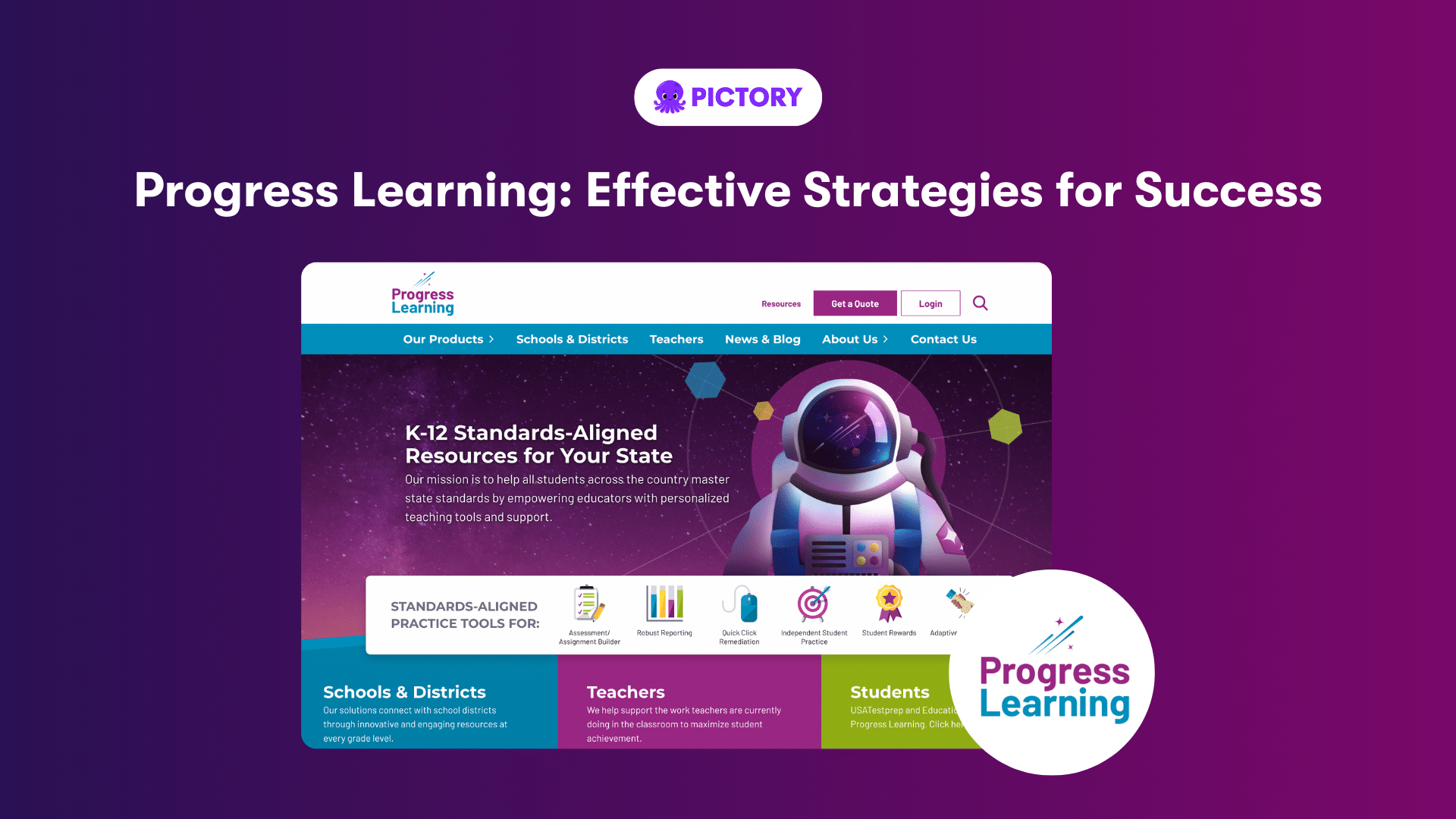Progress learning is an adaptive educational approach designed to meet the unique needs of each student. By focusing on personalized learning paths and interactive experiences, progress learning aims to boost student engagement and improve academic outcomes. In this article, we’ll delve into the principles of progress learning, its benefits for students and educators, and strategies for effective implementation.
Key Takeaways
Progress Learning offers a personalized, adaptive, and interactive educational experience for K-12 students, focusing on individual needs, critical thinking, creativity, and problem-solving skills.
Standards-aligned practice resources and personalized teaching tools in Progress Learning ensure engagement and effectiveness, providing over 300,000 adaptable practice items and initial skill assessments to tailor learning paths.
Data-driven insights and advanced technologies such as AI and ML are central to Progress Learning’s approach, enabling personalized instruction, efficient teaching practices, and enhanced student engagement and achievement.
Understanding Progress Learning
Progress Learning represents a transformative shift in the educational paradigm, focusing on personalized, adaptive, and interactive learning experiences for K-12 students. At its core, this approach recognizes that each learner is unique, with individual strengths, weaknesses, and learning styles. Progress Learning is not just a set of tools or techniques; it’s a comprehensive, standards-aligned instructional resource and content solution that tailors the learning journey to each student’s needs and pace.
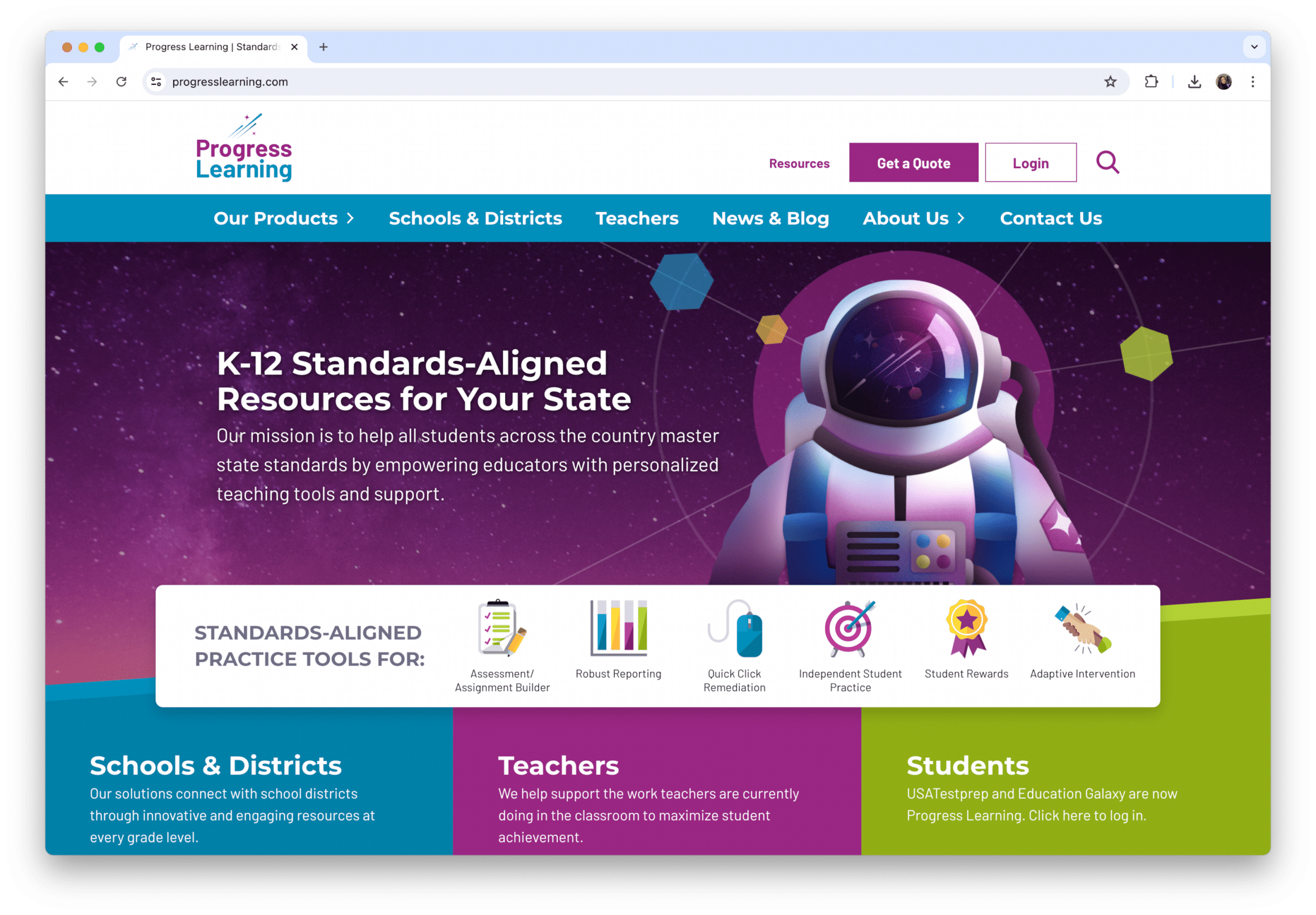
A distinctive feature of Progress Learning is its focus on developing critical thinking, creativity, and problem-solving skills. Given the ever-changing job market, these skills are vital for persistent learning and success. By fostering these abilities, Progress Learning prepares students not just for academic achievement, but for the challenges they’ll face throughout their lives.
The adaptive nature of Progress Learning differentiates it from the conventional one-size-fits-all approaches. The learning process is flexible, adjusting its pace according to the learner’s progress. This adaptability ensures that students are neither held back nor overwhelmed, allowing them to learn at a pace that’s comfortable and effective for them. Interactive learning is another cornerstone of this approach, with engaging multimedia content and real-time feedback keeping students actively involved in their education.
One particularly impactful facet of Progress Learning is the utilization of adaptive learning algorithms. These sophisticated tools:
Identify each learner’s strengths and weaknesses
Customize content to maximize comprehension
Create personalized learning paths
Address specific areas where a student may need more support or challenge
By utilizing these adaptive learning algorithms, Progress Learning fosters a deeper understanding of the subject matter, enhances learning outcomes, and boosts student confidence and engagement.
Personalized Teaching Tools for Progress Learning
Progress Learning provides an extensive selection of personalized teaching tools to accommodate the diverse needs of every student. These solutions encompass a wide range of resources, including:
Bell ringers
Lessons
Assessments
Activities
Games
Each of these tools is carefully crafted to adapt to individual learning styles and preferences, ensuring that every student can engage with the material in a way that resonates with them and makes sense.
The sheer variety of practice items available through Progress Learning is staggering. Teachers have access to over 300,000 practice items, presented in various formats to suit different learning modalities. These include traditional multiple-choice questions, engaging video content, and technology-enhanced items that leverage the latest in educational technology. This diversity not only keeps students interested but also allows them to practice and demonstrate their knowledge in ways that best suit their individual strengths.
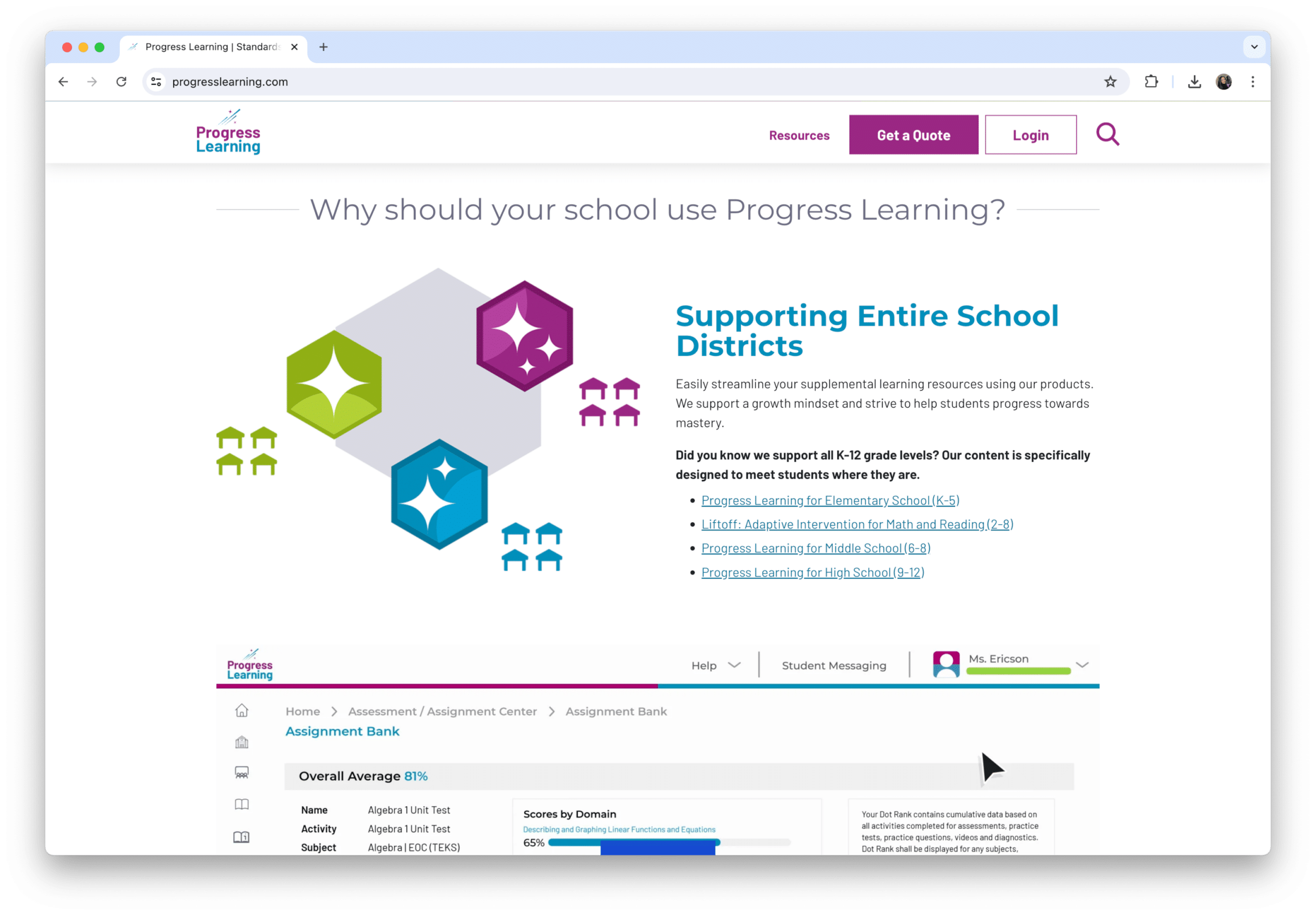
A significant benefit of these personalized teaching tools lies in their capacity to enhance student engagement. By utilizing resources that cater to individual student needs, instructors can create a more dynamic and interactive learning environment. This personalized approach helps to maintain student interest, increase motivation, and ultimately lead to better learning outcomes. It’s a departure from the one-size-fits-all model, recognizing that each student has unique learning requirements.
A vital part of effectively utilizing these tools is determining a baseline for each student. Before diving into class-wide lessons, Progress Learning enables teachers to assess students’ skill levels in various areas. This initial evaluation allows educators to tailor the curriculum based on individual student needs, ensuring that each learner starts from an appropriate point and progresses at a pace that challenges them without being overwhelming. This personalized starting point sets the stage for more effective learning throughout the academic year.
Standards-Aligned Practice Resources
In education, alignment with state standards is fundamental to guarantee that students receive a well-rounded and pertinent education. Progress Learning excels in this area by providing standards-aligned practice resources that are instrumental in helping students master state standards, including the country master state standards. These resources not only support student learning but also empower educators with the tools they need to create individualized lessons that meet rigorous educational benchmarks.
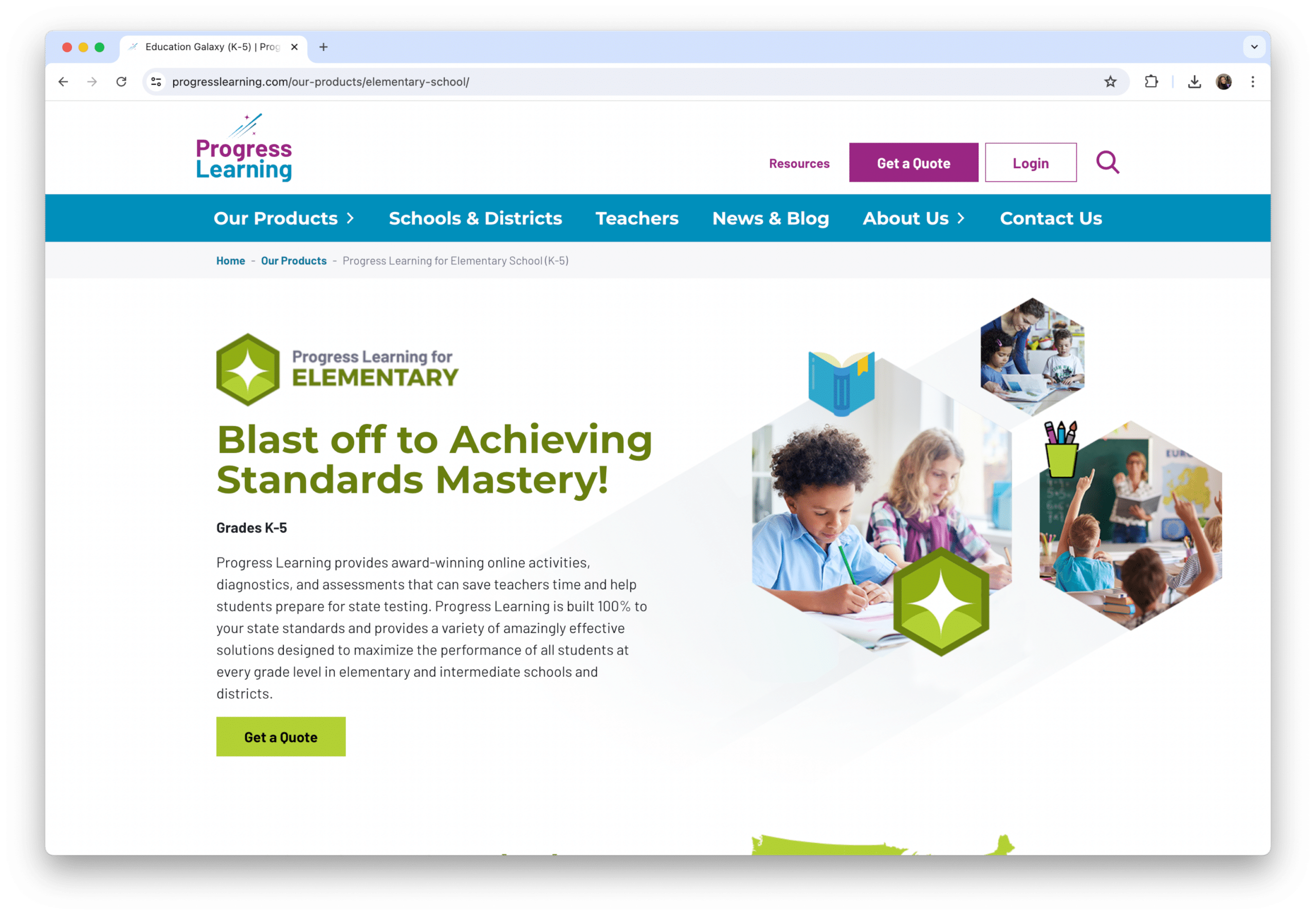
The alignment of standards across multiple levels of the educational system is a key strength of Progress Learning. By ensuring that students’ knowledge, teachers’ practices, and leaders’ actions are all in sync with established standards, Progress Learning creates a clear and collaborative instructional focus. This alignment fosters a cohesive learning environment where everyone is working towards the same well-defined goals, enhancing the overall effectiveness of the educational process.
One of the most noteworthy features of Progress Learning’s standards-aligned resources is the capacity to monitor student progress over time. The platform allows for:
Periodic comparisons of student achievement against established learning standards and benchmarks
Ongoing assessment to monitor comprehensive development
Identification of areas where students may be struggling
Celebration of successes as they occur
By providing this detailed tracking, Progress Learning ensures that no student falls through the cracks and that every learner receives the support they need to meet and exceed state standards.
Empowering Educators with Data-Driven Insights
In today’s educational landscape, data analytics is a potent tool for augmenting teaching and learning outcomes. Progress Learning harnesses this potential, placing data-driven insights at the forefront of its approach. These analytics play a crucial role in helping educators refine their teaching strategies and provide targeted interventions where they’re needed most.
Data-driven instruction is a pivotal element in Progress Learning’s methodology. By utilizing multiple forms of data, educators can make informed decisions about their teaching practices, tailoring their approach to meet the specific needs of their students. This data-informed decision-making process allows for a more responsive and effective educational experience.

Formative assessments constitute a major element of this data-driven approach. These assessments provide real-time feedback on student understanding, allowing educators to quickly identify areas where students may be struggling. With this immediate insight, teachers can adjust their instructional strategies promptly, ensuring that no student is left behind as the class progresses through the curriculum.
The collaborative aspect of Progress Learning further enhances its effectiveness. Teachers use the platform’s data during collaborative sessions to analyze summative assessments and identify both strengths and weaknesses in student performance. This collective analysis allows for a more comprehensive understanding of student needs and enables educators to develop targeted strategies for improvement.
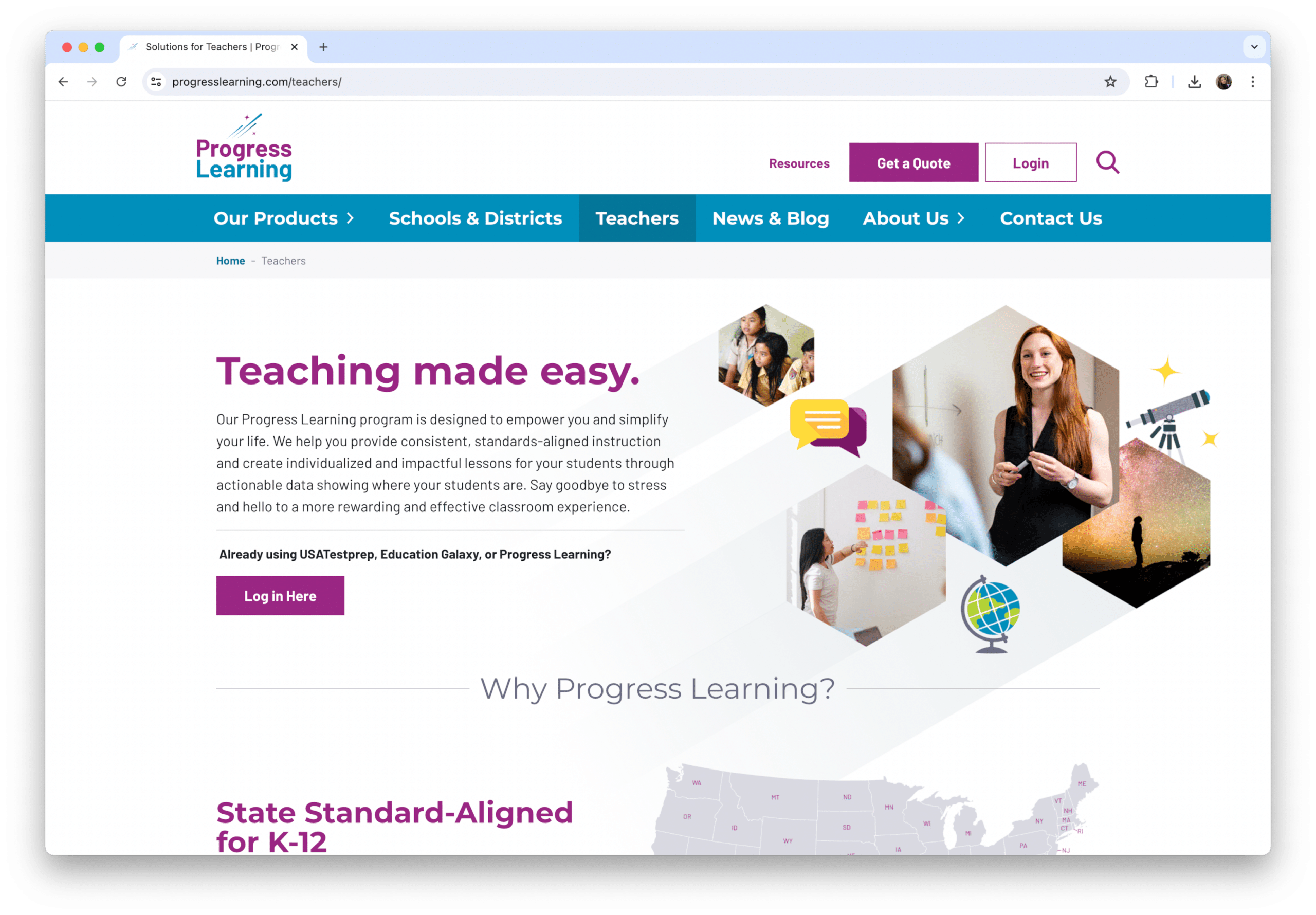
The impact of data-driven instruction on academic achievement is significant. By allowing for more effective teaching practices, this approach has been shown to positively influence student outcomes. Progress Learning’s detailed data reporting helps identify areas where students need additional support or have achieved mastery, enabling educators to provide personalized guidance and challenge. The platform’s benefits include:
Identifying areas where students need additional support or have achieved mastery
Providing personalized guidance and challenge
Accuracy in projecting student performance, closely matching state test results
Projected scores aligning precisely with actual outcomes
These features make Progress Learning a valuable tool for educators, as they help in overcoming the learning curve associated with new teaching methods.
Supporting Teachers in the Classroom
Progress Learning understands that empowering educators is central to the successful implementation of its innovative approach. To this end, the platform offers comprehensive training and support to ensure that teachers can make the most of its features. This support comes in various forms, including:
Webinars
Live sessions
Educational resources
Orientation materials
The goal is to transform teachers into product experts, enabling them to leverage Progress Learning’s full potential in their classrooms.
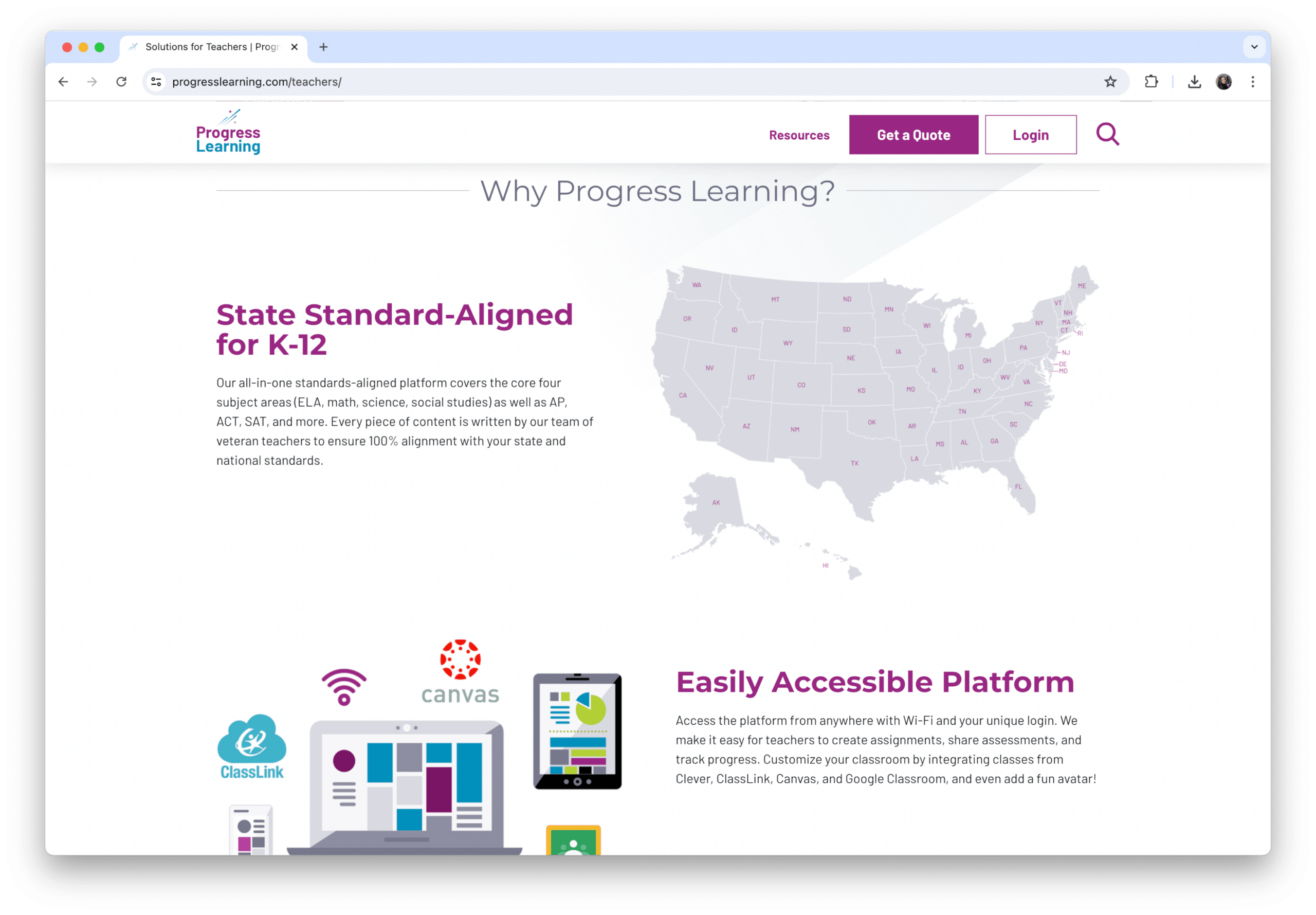
The collaborative nature of Progress Learning extends beyond student-teacher interactions to foster cooperation among educators. Teachers use the platform during collaborative sessions to:
Analyze data from their designed summative assessments and benchmarking programs
Share insights
Discuss effective strategies
Work together to address challenges
By facilitating these collaborative efforts, Progress Learning helps create a supportive community of educators committed to continuous improvement.
Ultimately, the support provided by Progress Learning is aimed at maximizing student achievement. The platform offers a wealth of comprehensive resources that effectively engage students, helping teachers to create dynamic and interactive learning environments. By equipping educators with the tools and knowledge they need to succeed, Progress Learning not only supports teachers in their day-to-day classroom activities but also contributes to the overall enhancement of educational outcomes.
Enhancing Student Engagement and Achievement
A uniquely innovative feature of Progress Learning is the integration of gamification elements to amplify student engagement and motivation. By integrating rewards and challenges into the learning process, Progress Learning transforms education into an exciting and captivating journey. This approach taps into students’ natural inclination towards play and competition, making the learning experience more enjoyable and memorable.
The reward system in Progress Learning is particularly successful in enhancing student motivation. Students can earn Galaxy Stars for their achievements, which they can then use to unlock games and avatars. This system of tangible rewards provides immediate positive reinforcement for learning efforts, significantly boosting student engagement. It creates a virtuous cycle where success leads to rewards, which in turn motivates further learning.
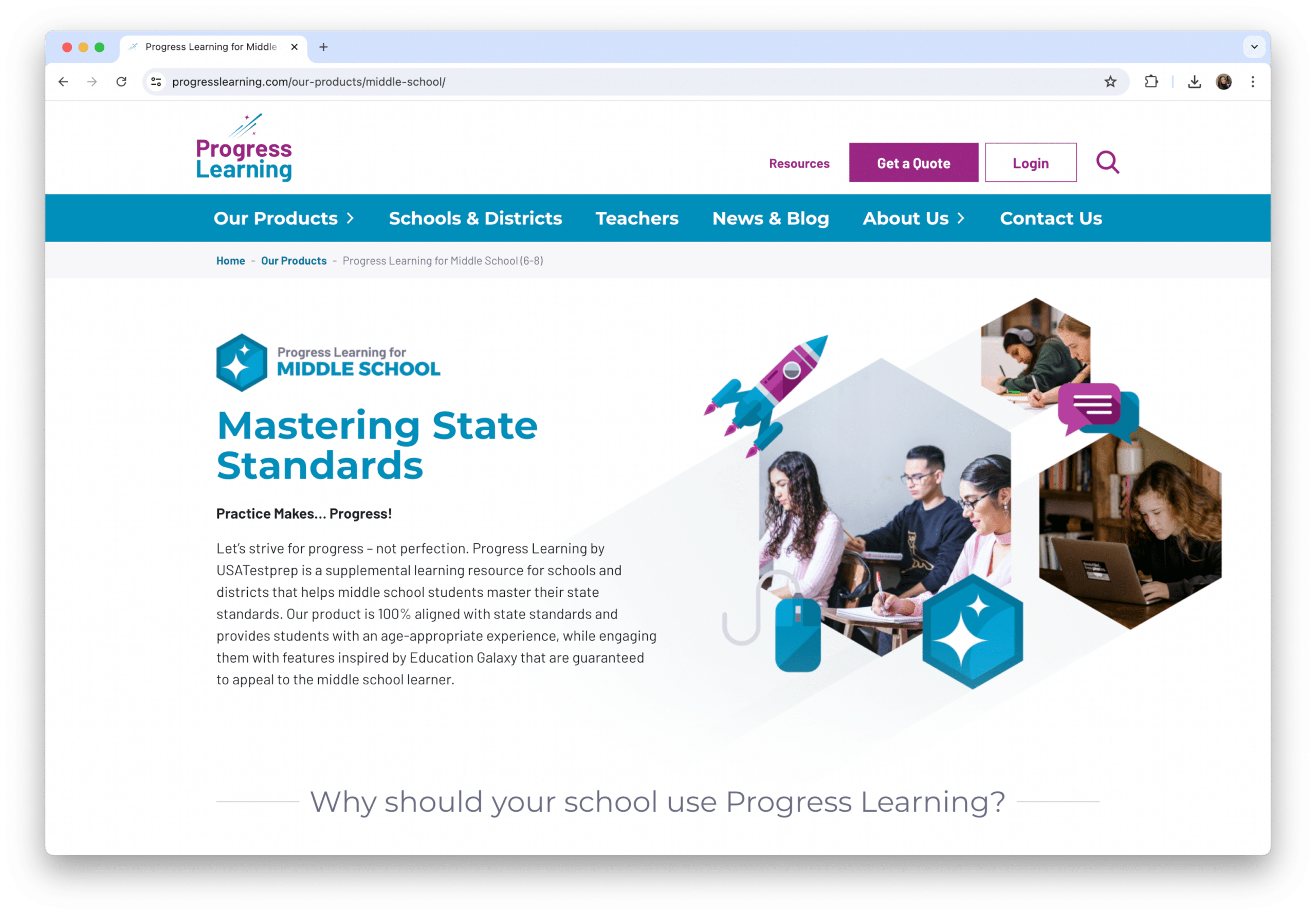
While gamification adds an element of fun, Progress Learning doesn’t compromise on educational rigor. The platform offers a range of interactive classroom activities and games that engage students while maintaining curriculum standards. This balance ensures that students are not only enjoying their learning experience but also making meaningful progress in their studies.
At the heart of Progress Learning’s approach is the concept of personalized learning. By tailoring instruction to each learner’s needs, strengths, and interests, the platform creates a more engaging and effective learning experience. This personalization extends to the use of AI-driven recommendation systems that offer content based on user preferences and behavior. By providing students with learning experiences that resonate with their individual interests and learning styles, Progress Learning increases knowledge retention and fosters a deeper engagement with the material.
Case Studies: Success Stories from Schools and Districts
The effectiveness of Progress Learning is ideally demonstrated through actual success stories. One such example is Charles Drew Elementary, a Title I school in Broward County, Florida. Prior to adopting Progress Learning, the school relied on traditional materials and district-provided resources. However, the implementation of Progress Learning marked a turning point in the school’s educational approach.
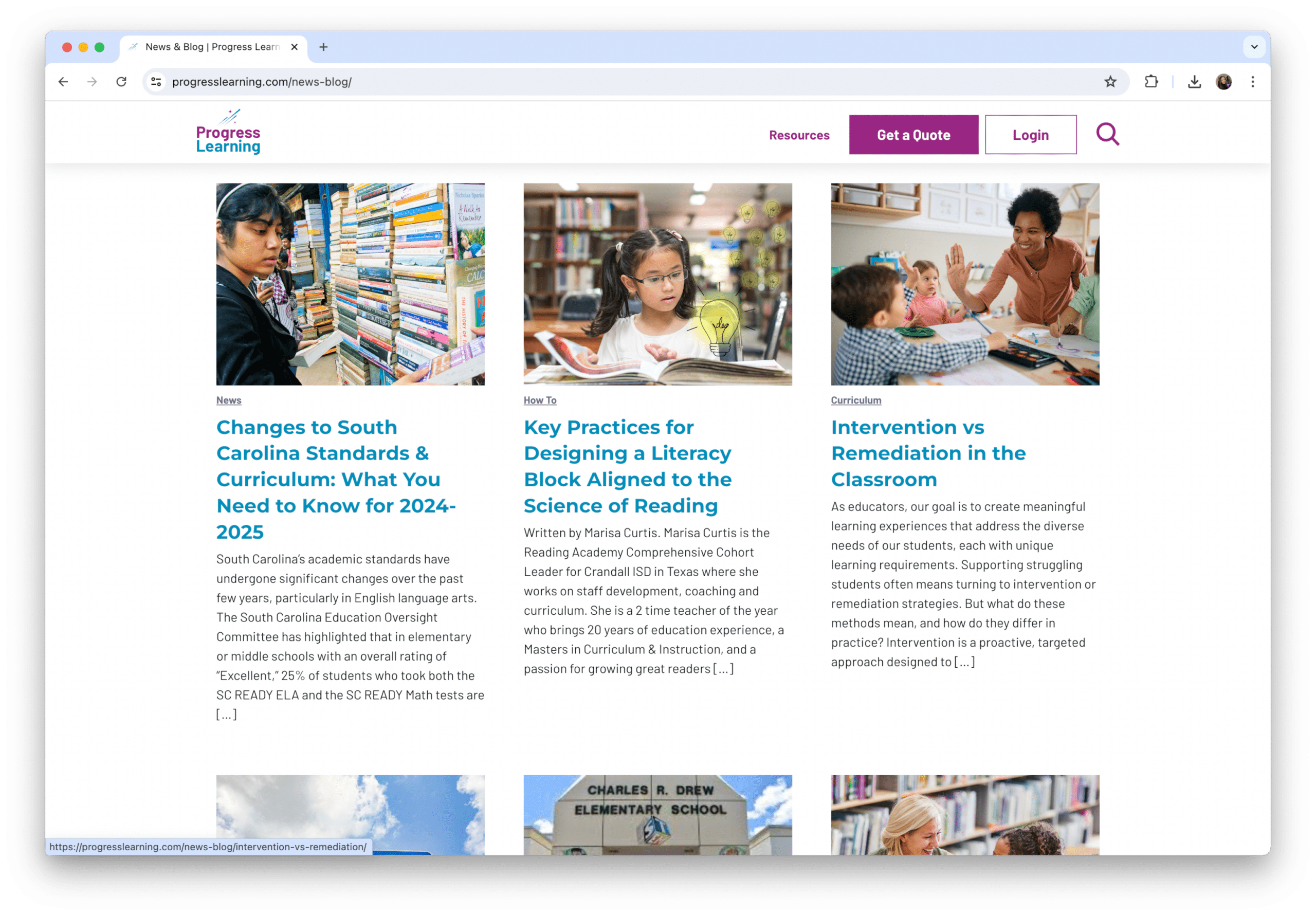
The impact of Progress Learning on Drew Elementary was swift and significant. Within months of implementation, the school’s science proficiency rose to 36%. Even more impressively, after a full year of usage, this figure climbed to 57%. The improvement wasn’t limited to science alone. The school’s reading proficiency saw a dramatic increase from 15% to 56% within a single academic year after switching to Progress Learning from district resources.
These remarkable improvements are a testament to the comprehensive nature of Progress Learning. The school utilized the platform for various aspects of education, including:
Assessments
Diagnostics
Remediation
Independent practice
This holistic approach significantly boosted both student retention and performance across multiple subjects, following a productive discussion on teaching strategies and incorporating a log of progress.
The success of Progress Learning isn’t limited to a single school. Dillon School District Four in South Carolina experienced similar positive outcomes. After implementing Progress Learning, the district saw remarkable growth in SCCCR mastery and SC READY test scores. These case studies underscore the transformative potential of Progress Learning when fully embraced by school districts. One educator has noted that Progress Learning has had a more significant impact on the classroom than any other program or website during their 6 years of teaching. The educator emphasized the program’s significant influence. Such testimonials highlight the profound effect this innovative approach can have on educational outcomes.
The Role of Technology in Progress Learning
In Progress Learning, technology assumes a central role, with artificial intelligence (AI) and machine learning leading this educational revolution. AI in education encompasses a collection of technologies that enable systems to simulate human comprehension, including learning, reasoning, and solving complex issues. This technological foundation allows Progress Learning to offer a level of personalization and adaptability that was previously unattainable in traditional educational settings.
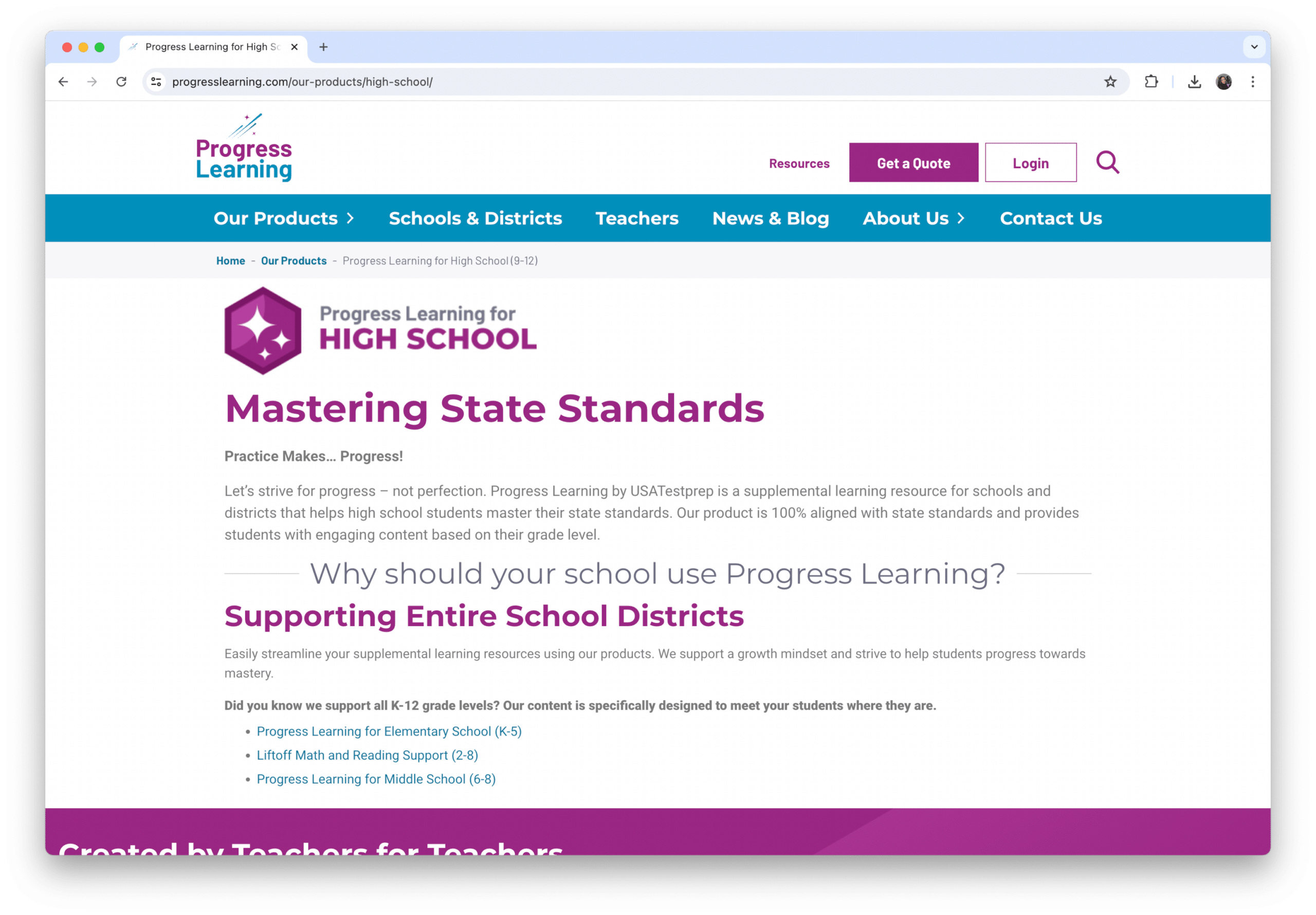
The integration of AI into Progress Learning brings numerous benefits to both educators and students. AI supports personalized learning by:
creating custom learning paths for students, allowing them to progress at their own pace
automating daily tasks for educators, freeing up valuable time that can be redirected towards more impactful teaching activities
providing insights for data-driven decision making, enabling educators to make informed choices about instructional strategies and interventions.
Machine Learning (ML), a branch of AI, has a key role in the ongoing enhancement of Progress Learning systems. ML algorithms evolve by learning from data, making smarter decisions with each new data encounter. In the context of education, this means that the more students interact with the system, the better it becomes at understanding individual learning patterns and preferences. This iterative improvement process ensures that the learning experience becomes increasingly tailored and effective over time.
The impact of these technologies on learning outcomes is significant. AI and machine learning improve learning outcomes by:
Providing more targeted and effective instruction
Reducing educator workload by automating routine tasks, allowing teachers to focus on high-value activities like one-on-one instruction and mentoring
Increasing learner engagement by providing interactive and personalized content that resonates with individual students
By making learning more accessible and inclusive, AI and machine learning are helping to level the playing field in education, ensuring that all students have the opportunity to reach their full potential.
Creating Engaging Educational Content with Pictory
In the digital era, video content has emerged as a progressively significant tool for engaging learners. This is where Pictory, an AI-powered video creation platform, comes into play as a valuable asset in the Progress Learning ecosystem. Pictory has the ability to transform educational content into engaging videos effortlessly, making learning more accessible and captivating for students everywhere. This tool aligns perfectly with Progress Learning’s goal of creating personalized and engaging learning experiences.
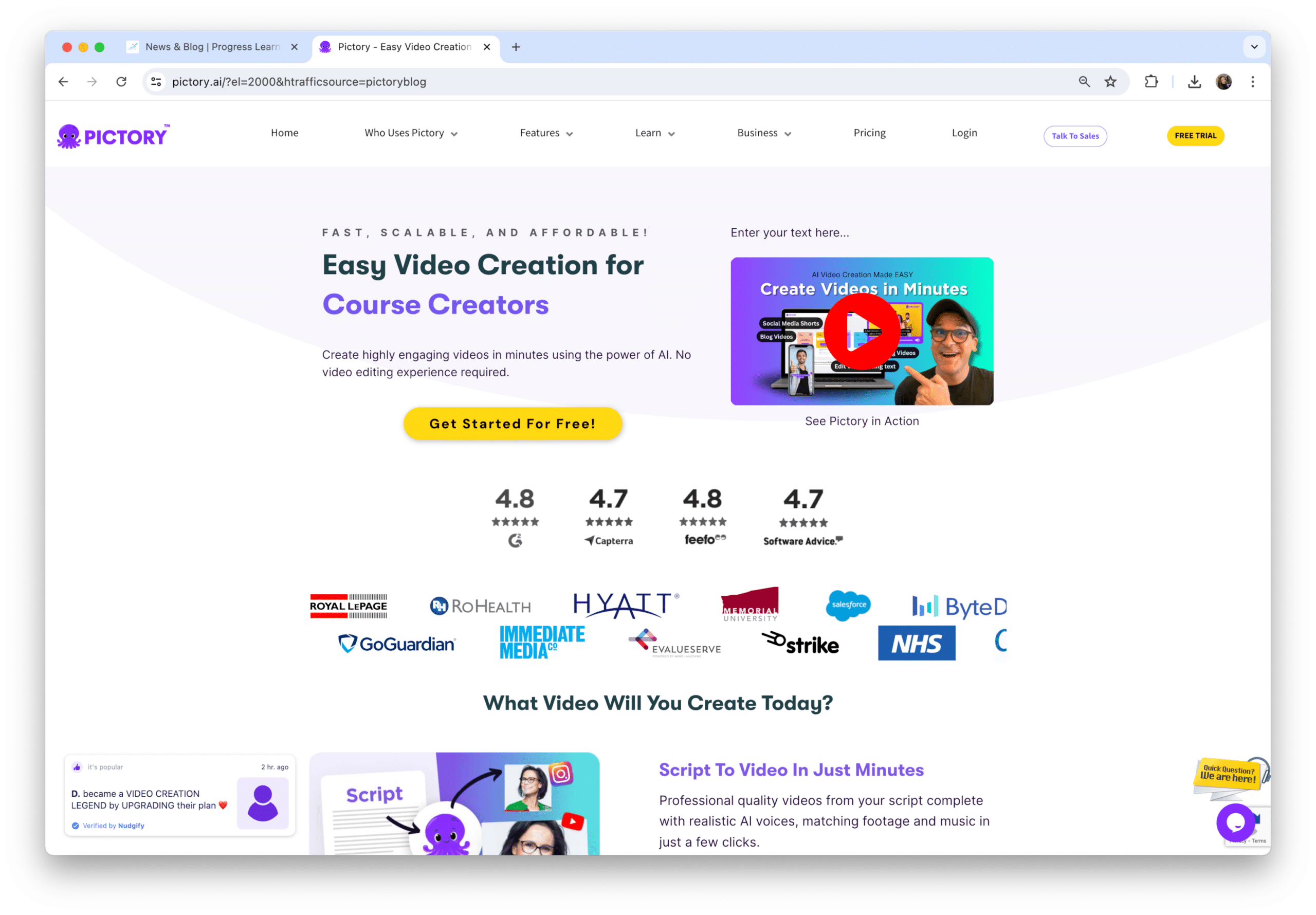
What distinguishes Pictory is its all-inclusive set of features tailored specifically for education professionals. Users can create videos in minutes using text, URLs, or media, giving educators flexibility in how they approach content creation. The platform offers the option to choose between AI-generated voiceovers or recording one’s own voice, allowing for a personal touch when needed. Perhaps most impressively, Pictory boasts a massive media library containing over 10 million royalty-free videos, images, and music tracks, providing educators with a wealth of resources to create visually stunning and engaging content.
Creating educational videos with Pictory is a simplified and user-friendly process. Educators can start by:
Pasting scripts or using AI to extract key sentences from blog posts or other written materials
Pictory then automatically creates videos using visuals sourced from its extensive library of royalty-free content
This automation saves educators valuable time while ensuring high-quality output
The addition of AI-powered voiceovers or the option to record personal narration further enhances the versatility of the platform.
After creating a video, Pictory offers extensive customization options to ensure the content aligns with institutional branding and educational goals. Users can:
Add their logo
Customize colors
Incorporate specific fonts
The platform also provides a quick preview feature, allowing educators to review and refine their content before finalizing it. Once satisfied, users can generate the video and download it as an MP4 file, ready for distribution to students or integration into learning management systems. This combination of ease of use, customization options, and high-quality output makes Pictory an invaluable tool for creating engaging educational content in the Progress Learning framework.
Practical Tips for Implementing Progress Learning Strategies
Effectively deploying Progress Learning strategies necessitates a systematic approach and meticulousness. One of the first steps in this process is to establish a clear starting point for each student. Begin by determining baseline skill levels for each learner. This initial assessment is crucial for tracking future growth effectively. Once baselines are established, it’s important to set clear, SMART learning goals. These goals should be:
Specific
Measurable
Attainable
Relevant
Time-based
This provides a clear roadmap for both students and educators, filled with ideas.
Tracking student progress is a cornerstone of the Progress Learning approach. Educators should regularly observe and gather evidence of student progress through various methods. This can include free play observations, formal assessments, and even photos documenting student work. The key is to use a diverse range of assessment tools to get a comprehensive picture of each student’s development. To make this data useful, it’s crucial to organize it efficiently. Consider using individual binders or digital platforms to maintain easy access and shareability of progress data.
For older students, visual goal trackers can be a powerful motivational tool. Creating visual representations of progress helps students take ownership of their learning journey. These trackers can be displayed in the classroom or kept in personal learning portfolios, allowing students to see their growth throughout the year. This visual feedback not only motivates students but also helps them develop metacognitive skills as they reflect on their learning process.
By implementing these practical strategies, educators can maximize the effectiveness of Progress Learning, creating a dynamic and responsive learning environment that caters to the needs of each individual student.
Summary
Progress Learning represents a paradigm shift in education, offering a comprehensive, personalized approach to learning that leverages cutting-edge technology and data-driven insights. From its adaptive learning algorithms and gamification elements to its standards-aligned resources and support for educators, Progress Learning is designed to meet the diverse needs of today’s students and teachers. The success stories from schools like Charles Drew Elementary and Dillon School District Four demonstrate the tangible impact of this innovative approach. As we’ve explored, tools like Pictory further enhance the ability to create engaging educational content, while practical implementation strategies ensure that Progress Learning can be effectively integrated into any classroom. As education continues to evolve, Progress Learning stands at the forefront, empowering educators and students alike to achieve their full potential. The future of education is here, and it’s personalized, adaptive, and driven by progress.
Frequently Asked Questions
What makes Progress Learning different from traditional learning methods?
Progress Learning offers personalized, adaptive learning experiences tailored to each student’s needs and pace, utilizing AI, data analytics, and gamification to boost engagement and provide real-time feedback. Unlike traditional methods, it continuously adjusts to the learner’s progress.
How does Progress Learning support teachers in the classroom?
Progress Learning supports teachers in the classroom by providing comprehensive training, access to a wide range of practice items for personalized lessons, data-driven insights for tracking student progress, and fostering a supportive professional community among educators. These resources enable teachers to make informed decisions about instructional strategies and collaborate with their peers effectively.
Can Progress Learning be aligned with state standards?
Yes, Progress Learning is designed to align with state standards, offering standards-aligned practice resources and comprehensive development tracking to ensure it meets or exceeds state requirements.
How does Progress Learning enhance student engagement?
Progress Learning enhances student engagement by incorporating gamification elements like rewards and challenges, offering personalized learning paths, and providing interactive classroom activities and games while maintaining curriculum rigor. AI-driven personalization also recommends content based on user preferences to further increase engagement.
What role does technology play in Progress Learning?
Technology plays a crucial role in Progress Learning, utilizing AI and ML to create personalized learning paths and automate tasks for educators, resulting in more accessible, inclusive, and effective education.

